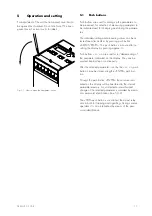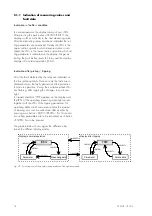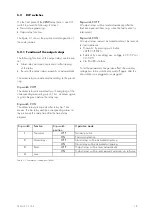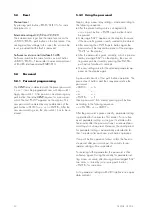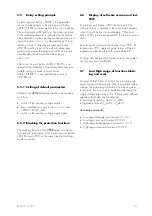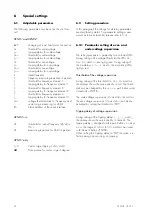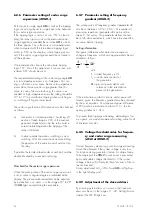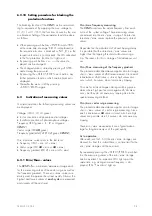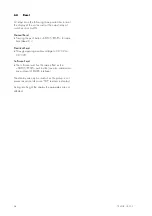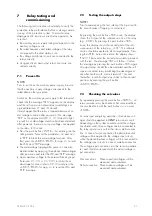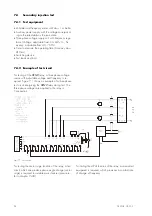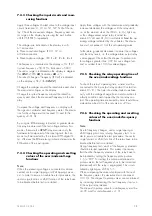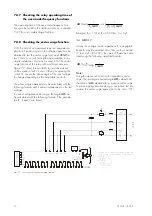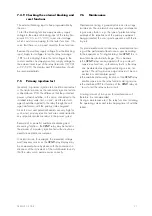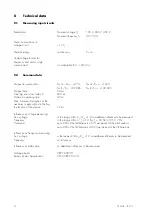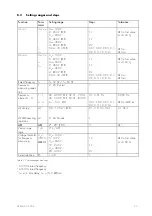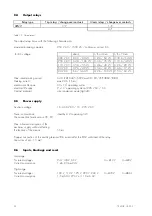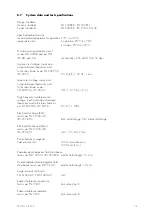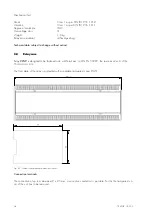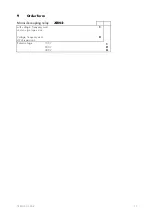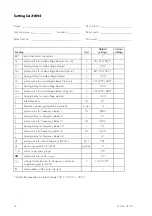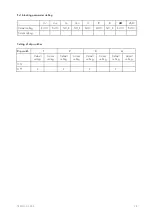
TB XRN2 02.00 E
31
7.4.9
Checking the external blocking and
reset functions
The external blocking input is free programmable by
the user.
To test the blocking function apply auxiliary supply
voltage to the external blocking input of the relay (ter-
minals C1/C1L or C1/C1H). Inject a test voltage
which could cause tripping for the testes functions. Ob-
serve that there is no trip and alarm for those functions.
Remove the auxiliary supply voltage from the blocking
input. Apply test voltages to trip the relay (message
„TRIP“ on the display). Return the test voltages to the
sound condition and apply auxiliary supply voltage to
the external reset input of the relay (terminals C2/C2L
or C2/C2H). The display and LED indications should
be reset immediately.
7.5
Primary injection test
Generally, a primary injection test could be carried out
in the similar manner as the secondary injection test de-
scribed above. With the difference that the protected
power system should be, in this case, connected to the
installed relays under test „on line“, and the test volt-
ages should be injected to the relay through the volt-
age transformers with the primary side energized.
Since the cost and potential hazards are very high for
such a test, primary injection tests are usually limited to
very important protective relays in the power system.
Because of its powerful combined indicating and
measuring functions, the
XRN2
relay may be tested in
the manner of a primary injection test without extra ex-
penditure and time consumption.
In actual service, for example, the measured voltage
and frequency values on the
XRN2
relay display may
be compared phase by phase with the concerned in-
dications of the instruments of the switchboard to verify
that the relay works and measures correctly.
7.6
Maintenance
Maintenance testing is generally done on site at regu-
lar intervals. These intervals vary among users depend-
ing on many factors: e.g. the type of protective relays
employed; the importance of the primary equipment
being protected; the user's past experience with the re-
lay, etc.
For electromechanical or static relays, maintenance test-
ing will be performed at least once a year according
to the experiences. For digital relays like
XRN2
, this in-
terval can be substantially longer. This is because:
•
the
XRN2
relays are equipped with very wide self-
supervision functions, so that many faults in the relay
can be detected and signalised during service. Im-
portant: The self-supervision output relay must be con-
nected to a central alarm panel!
•
the combined measuring functions of the
XRN2
relay
enable supervision the relay functions during service.
•
the combined TRIP test function of the
XRN2
relay al-
lows to test the relay output circuits.
A testing interval of two years for maintenance will,
therefore, be recommended.
During a maintenance test, the relay functions including
the operating values and relay tripping times should be
tested.
Summary of Contents for XRN2
Page 1: ...XRN2 Mains decoupling relay ...
Page 40: ...40 TB XRN2 02 00 E ...

